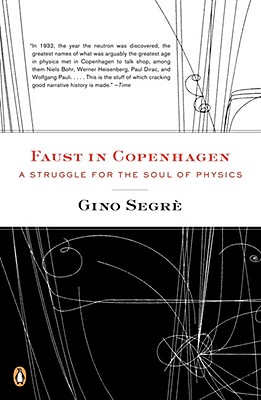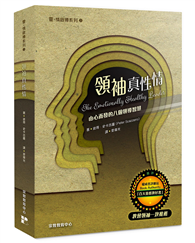A physicist himself, Gino Segr writes about what scientists do?and why they do it?with intimacy, clarity, and passion. In Faust in Copenhagen, he evokes the fleeting, magical moment when physics?and the world?was about to lose its innocence forever. Known by physicists as the miracle year, 1932 saw the discovery of the neutron and antimatter, as well as the first artificially induced nuclear transmutations. However, while scientists celebrated these momentous discoveries?which presaged the nuclear era and the emergence of big science?during a meeting at Niels Bohr's Copenhagen Institute, Europe was moving inexorably toward totalitarianism and war.
| FindBook |
有 1 項符合
Faust in Copenhagen: A Struggle for the Soul of Physics的圖書 |
 |
Faust in Copenhagen: A Struggle for the Soul of Physics 作者:Segre 出版社:Penguin Books 出版日期:2008-06-01 語言:英文 規格:平裝 / 310頁 / 21.3 x 14 x 1.8 cm / 普通級 |
| 圖書館借閱 |
| 國家圖書館 | 全國圖書書目資訊網 | 國立公共資訊圖書館 | 電子書服務平台 | MetaCat 跨館整合查詢 |
| 臺北市立圖書館 | 新北市立圖書館 | 基隆市公共圖書館 | 桃園市立圖書館 | 新竹縣公共圖書館 |
| 苗栗縣立圖書館 | 臺中市立圖書館 | 彰化縣公共圖書館 | 南投縣文化局 | 雲林縣公共圖書館 |
| 嘉義縣圖書館 | 臺南市立圖書館 | 高雄市立圖書館 | 屏東縣公共圖書館 | 宜蘭縣公共圖書館 |
| 花蓮縣文化局 | 臺東縣文化處 |
|
|
圖書介紹 - 資料來源:博客來 評分:
圖書名稱:Faust in Copenhagen: A Struggle for the Soul of Physics
內容簡介
作者簡介
Gino Segrè is professor of physics and astronomy at the University of Pennsylvania. An internationally renowned expert in high-energy elementary-particle theoretical physics, Segrè has served as director of Theoretical Physics at the National Science Foundation and received awards from the National Science Foundation, the Alfred P. Sloan Foundation, and the Guggenheim Foundation. This is his first book.
|











